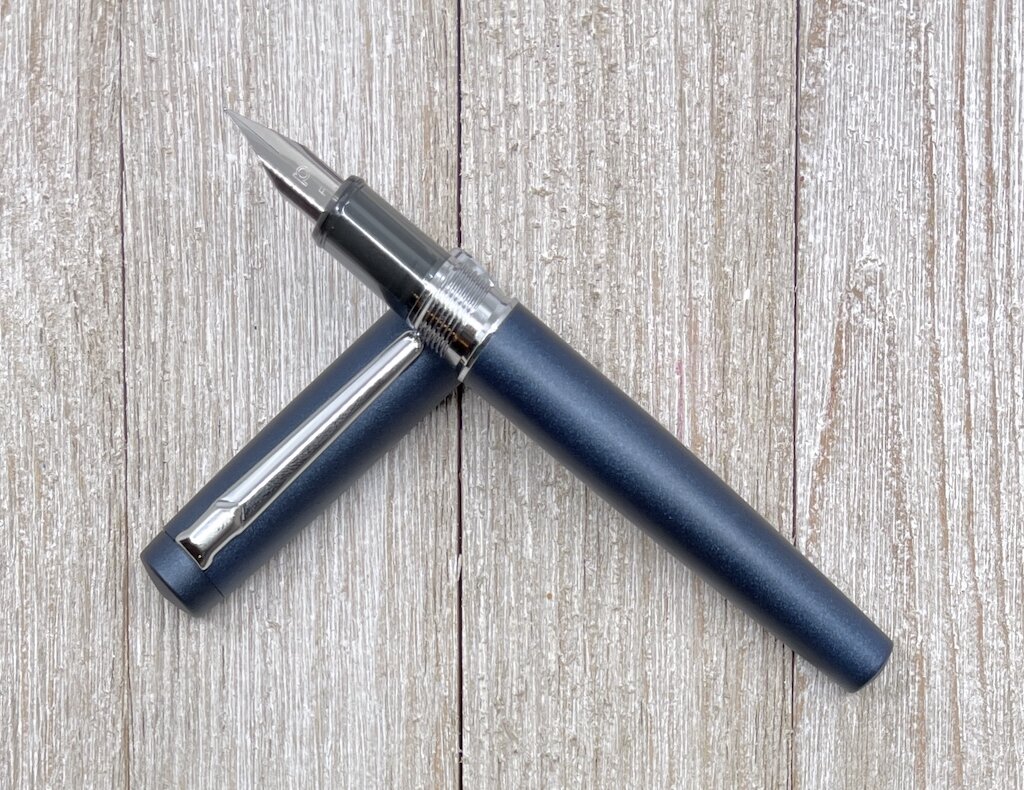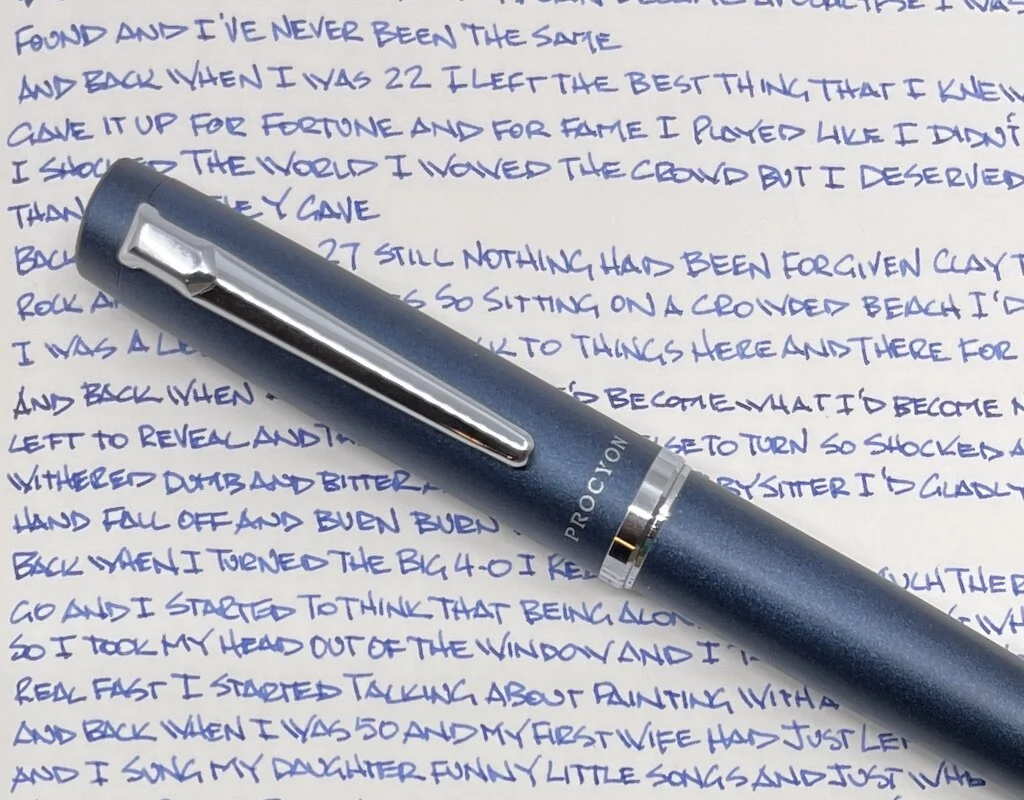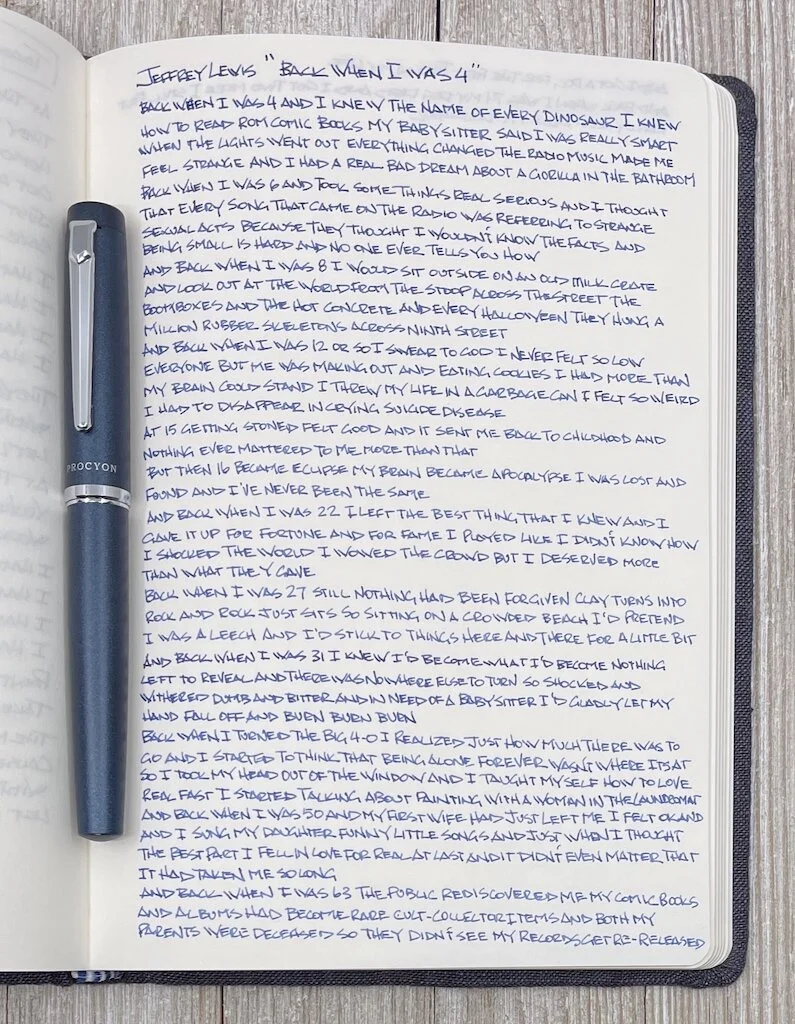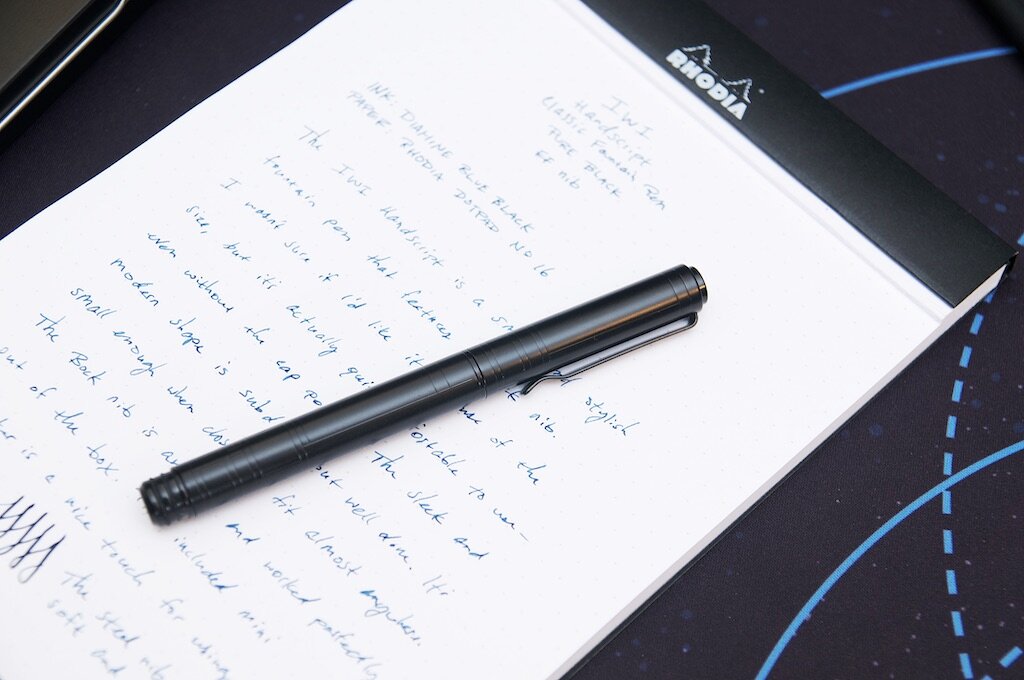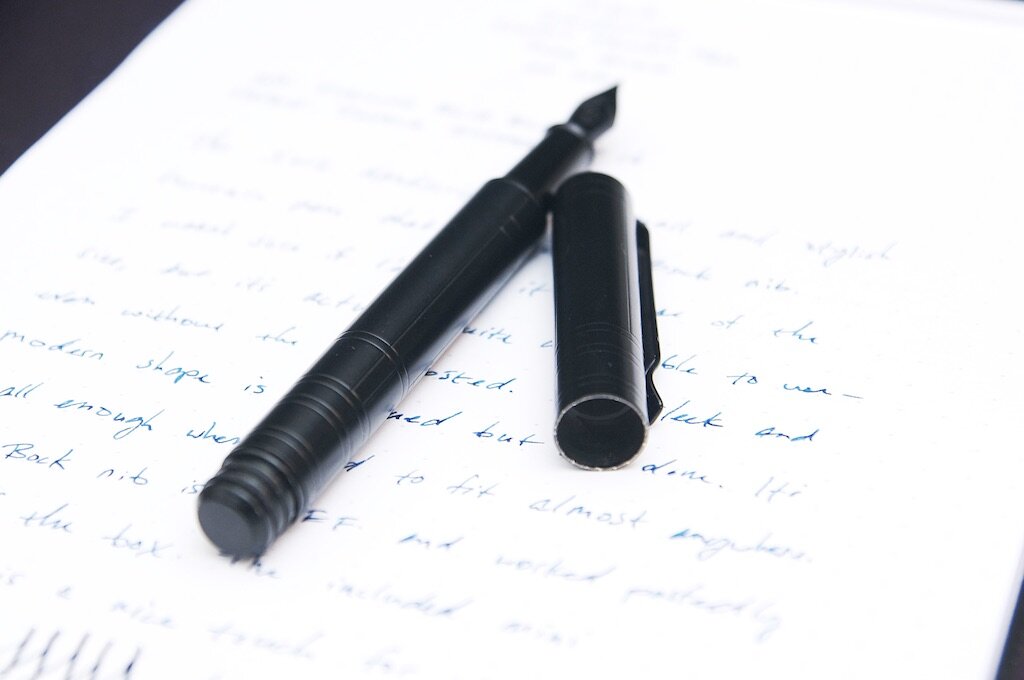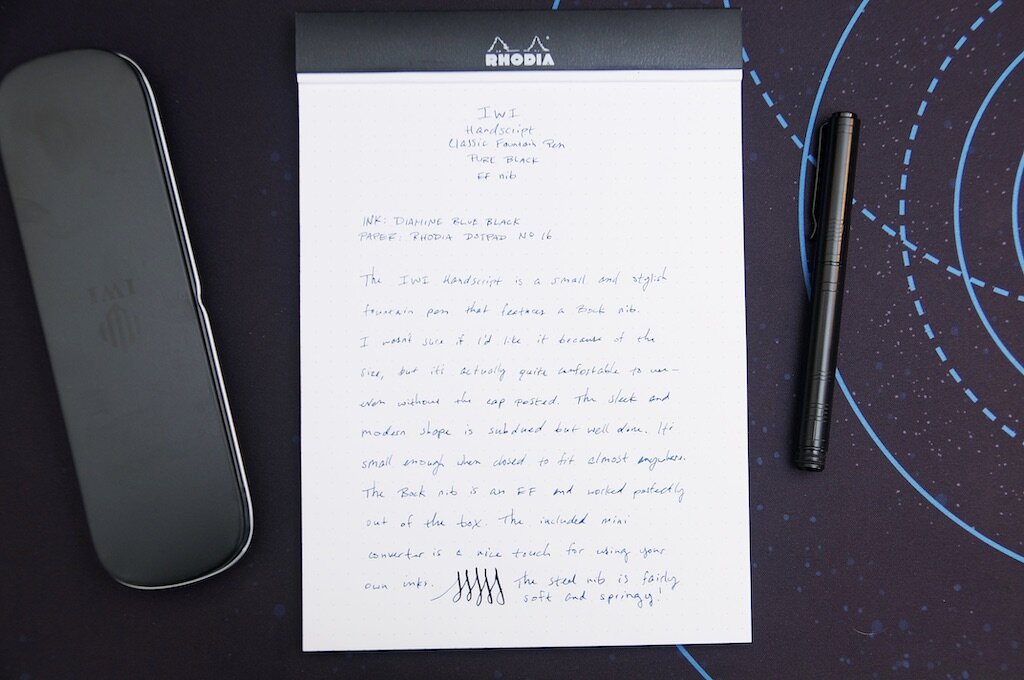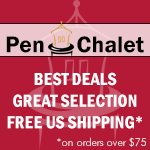You will notice on some stacked nibs a strip of metal that runs on top of the nib. These are called overfeeds, and the theory is that by adding a place near the tipping where another piece of metal touches the nib slit creates an additional volume of ink that will be held suspended near the tip. This additional ink will serve as a buffer, making sure that the nib does not run out of ink. In theory, the physics of this make sense. In practice, I have never met anyone who thought they made a significant difference. I have one nib with an overfeed, a two layer by Ralph, and I cannot tell that it matters. If your experience is different, please let me know.
Purchasing one of these nibs is not simple, unfortunately.
Sailor stacked nibs are not listed online at the stores in America which stock them. So in person is the way to go, if you are close to Dromgooles, Anderson Pens, or Pen Boutique. Those are the three that I know of in the States. They do show up used on eBay or on the other various pen forums, but it is not common.
Otherwise, the best approach is to follow the individual makers on Instagram. When and if they have something for sale, that is where we will find out.
If you do have the opportunity to buy one, be warned that they will be costly. A lot of time goes in to creating one of these, and the people who are making these deserve the be reimbursed for this time.
Which stacked nib to buy, from which maker? I recommend getting any one you can. While there are subtle differences between all of the nibs I have shared here, and the approaches of each of the makers, they are all making good nibs. I am excited for what each of them is doing, and look forward to seeing what they, and others, create next.
Practical considerations
Most two layer nibs will fit in most caps. Three or more layers, and you will want to check with the person creating the nib. A custom pen may be needed to enjoy some of the more extreme creations.
The grind of these nibs is as important as it is on any other pen. Some makers are focusing on imitating the Naginata style grind, such as CY, and seeking to give maximal line variation based on angle of the pen. Others are grinding more of an architect style, so that the line is a consistent width no matter what angle is used. Some people are doing both, so be sure to specify which approach you want, if and when you are able to order a nib.
In addition to being the most compatible with stock pens, a two-layer nib gets you most of the performance of the multi-layered nibs. The failure rate of making three layer welded nibs is higher, and getting the flow dialed in is a challenge for the maker. Two layers, made with nibs that are initially rather broad, seems to be the sweet spot for stacked nibs.
These are durable and usable nibs. These are all steel welded to steel, or gold welded to gold - these are not going to fall apart. I carry a stacked nib in my pocket every day.
These nibs do not flex. At all. Layers of metal welded together do not flex, as a general rule. I can tell no difference between using a steel stacked nib vs a gold stacked nib. Gold is easier to weld, but with steel nibs being so much cheaper those tend to be what makers use.
Further, paper choice matters even more than with single layer fountain pens. Any paper used has to be able to handle a lot of ink, and dry times may be long. I use a Musubi with Tomoe River for writing in the morning, and use a piece of blotter paper.
Other than avoiding shimmer inks, which would be nigh on impossible to clean out of a stacked nib, I use any ink I want. Dry ink, wet inks, they all work. When using such a firehose of a nib, the difference between a dry and a wet ink is not significant.
What filling system works best to get ink to one of these nibs? An eyedropper, piston, or something where the entire back of the feed is in contact with the ink. Some of these nibs have the ability to be used with a cartridge or converter, however, it seems to be an inferior experience to do so. Nailing down the flow, so that all the layers of the nib receive ink yet the overall nib is not too wet, seems to be the greatest challenge of creating these. In my experience, a Japanese eyedropper, with its ability to control flow of ink to the back of the nib, is the ideal pen when using a stacked nib that doesn’t have the flow dialed in. Thus, my favorite vehicle for these are my Opus 88's - they are an affordable Japanese eyedropper that can be had in both Jowo and Bock compatible models. (A Conid can do the same thing, if you have a feed that will allow this.)
Flexible Nib Factory creates a two-channel and a three-channel Jowo feed. A stock Jowo feed seems to keep up with a two layer stacked nib, though switching over to a FNF two channel Jowo feed is fun. These nibs can be pulled, and treated like any other nib, but I confess that I prefer not to unless I have no other choice. The three channel seems to be best used with a three layered nib, or a full flex nib. To put a three channel feed on a single or double layer nib may be....messy.
Interested? Unless you are lucky enough to live near one of the brick and mortar stores that sells Sailor specialty nibs, I would suggest trying one of the Sailor Fude nibs. Once you have played around with it, ask yourself if you want to be able to write in that fashion, but with a better ink flow and the ability to write at a normal speed. If so, follow the makers listed above on Instagram, look around who might get to a brick and mortar store, set some saved searches on eBay, and I hope you find one. What you see above has taken me years to put together, but I have found the hunt to be worth it.
Which is my favorite? As of right now, it is this one … a three layer prototype that Ralph made, filled up with my favorite ink. But that is just for now, it might change soon.



